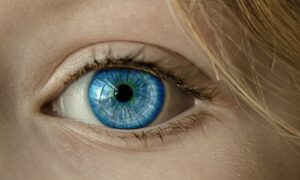by James Scott Bell
@jamesscottbell
We had quite a deluge recently in L.A. The good news is we’re out of drought conditions. The bad news is that mudslides and traffic accidents had their predictable increases. Also, a 40-foot sinkhole on a major street opened like the jaws of a subterranean monster, swallowing two vehicles. As reported on local news Channel 5:
A mother and her teen daughter had to be rescued and taken to the hospital Monday night after their Nissan, along with a pickup truck, fell inside the sinkhole.
The passengers in the pickup were able to escape their vehicle uninjured, but the truck landed on top of the Nissan, trapping the woman and the teen.
It took first responders with the Los Angeles Fire Department, Los Angeles County Fire and Ventura Fire about an hour to pull the mother and daughter from the sinkhole in a dangerous rescue operation.
“It was a dynamic rescue,” LAFD Cpt. Erik Scott said. “The cars were shifting, moving. Firefighters did an outstanding job with the calculated rescue. We lowered ladders and ultimately did what we call a high angle rope rescue where we had our big aerial ladder truck, lower a firefighter on a rope, secure a harness, lift those people to safety.”
Here’s what that looked like (click to enlarge):
Thank God no one was seriously injured. And since I can’t turn off my metaphor machine, I found myself thinking about another kind of sinkhole—fiction blunders that can bring the reading experience to a dead stop. Such as:
The Tiresome Lead
A quirky, even interesting, Lead character can quickly wear out his welcome if he goes unchallenged by a little thing I like to call plot. Unless that character faces some trouble, and soon, I’m not likely to wait around. (Sorry fans of A Confederacy of Dunces, but I tried three times to get into this book, and the over-quirked and obnoxious Lead who just roams around whining and jabbering sank me every time.)
Think about another annoying Lead—Scarlett O’Hara. When we first meet her, she’s sitting on her porch flirting with the Tarleton twins. A couple pages of this and we’re almost ready to move on, until…a disturbance. The first sign of trouble for Scarlett—Ashley is going to marry Melanie! That leads to her plan to corner Ashley at the barbecue at Twelve Oaks, which becomes an argument, which leads Ashley storming out, thence to Scarlett throwing a china bowl at the fireplace…at which the voice of Rhett Butler comes from the sofa, “This is too much.”
Three pages later, Charles Hamilton tells her the war has started, and in his clumsy way asks her to marry him. To spite Ashley, she says yes. Hoo boy, is she ever going to have trouble now.
JSB Sinkhole Avoidance Technique #1: Give a disturbance on the opening page, even a subtle one, to shake the Lead out of her placid existence. Then start to pile on the troubles.
The Distant Doorway
It is not until the Lead is forced into the confrontation of Act 2 that full engagement is realized and the main plot begins. Dorothy has immediate trouble with Miss Gulch, who takes Toto away. But it’s not until the twister dumps her in Oz that the story proper begins.
JSB Sinkhole Avoidance Technique #2: Push your Lead through the Doorway of No Return (what some call Plot Point 1) no later than 1/5 into the book (the 1/4 mark is more applicable to screenplays). In GWTW the war breaks out at the 20% mark. (I’m amused at how Margaret Mitchell keeps things moving. The first chapter after passing through the Doorway of No Return begins: Within two weeks Scarlett had become a wife, and within two months more she was a widow. So much for Charles! Let’s move on to Rhett.)
Stakes Less Than Death
I’ve written here before about death stakes. Unless the conflict is a life-and-death struggle, the plot will not engage as it should.
Now, there are three kinds of death. Physical (an obvious one for thrillers), professional, and psychological. Your novel needs one of these as primary. The others can be added below the surface.
For example, Harry Bosch faces all three at one time or another in the Michael Connelly series. I would argue that the primary in most of the books is psychological. For Bosch, his employment as a cop is often on the line (professional) but he is obsessed with cold cases and seemingly “unimportant” victims. “Everybody counts or nobody counts,” he tells a police psychologist in The Last Coyote. “That’s it. It means I bust my ass to make a case whether it’s a prostitute or the mayor’s wife. That’s my rule.” Why? Because his mother, a prostitute, was murdered when he was eleven, and the case went unsolved. To keep from dying inside (psychological death) Bosch gives his all to the forgotten victims.
JSB Sinkhole Avoidance Technique #3: Brainstorm all three types of death for your Lead. Not all may apply, but it’s a good exercise. For example, in a cozy mystery professional (or vocational) death for the sleuth is usually the primary. Miss Marple is faced with a seemingly intractable mystery. Usually there’s not someone out trying to kill her (though maybe that was in a book or two, I don’t know). You, perhaps, might find it a nice way to up the stakes in your cozy.
Avoiding speed bumps, potholes, and sinkholes is part of our craft. And if I may offer a commercial to help in this regard, consider 27 Fiction Writing Blunders – And How Not To Make Them and Plotman to the Rescue: A Troubleshooting Guide to Fixing Your Toughest Plot Problems. I’m here to help.
Any other sinkholes you spot in fiction?
And please drive safe, especially in the rain.


 She put one hand behind her and flipped the snap of her halter and tossed it to the floor, staring at him with eyes of liquid smoke in which there was a curious and great disinterest. – From Here to Eternity by James Jones
She put one hand behind her and flipped the snap of her halter and tossed it to the floor, staring at him with eyes of liquid smoke in which there was a curious and great disinterest. – From Here to Eternity by James Jones